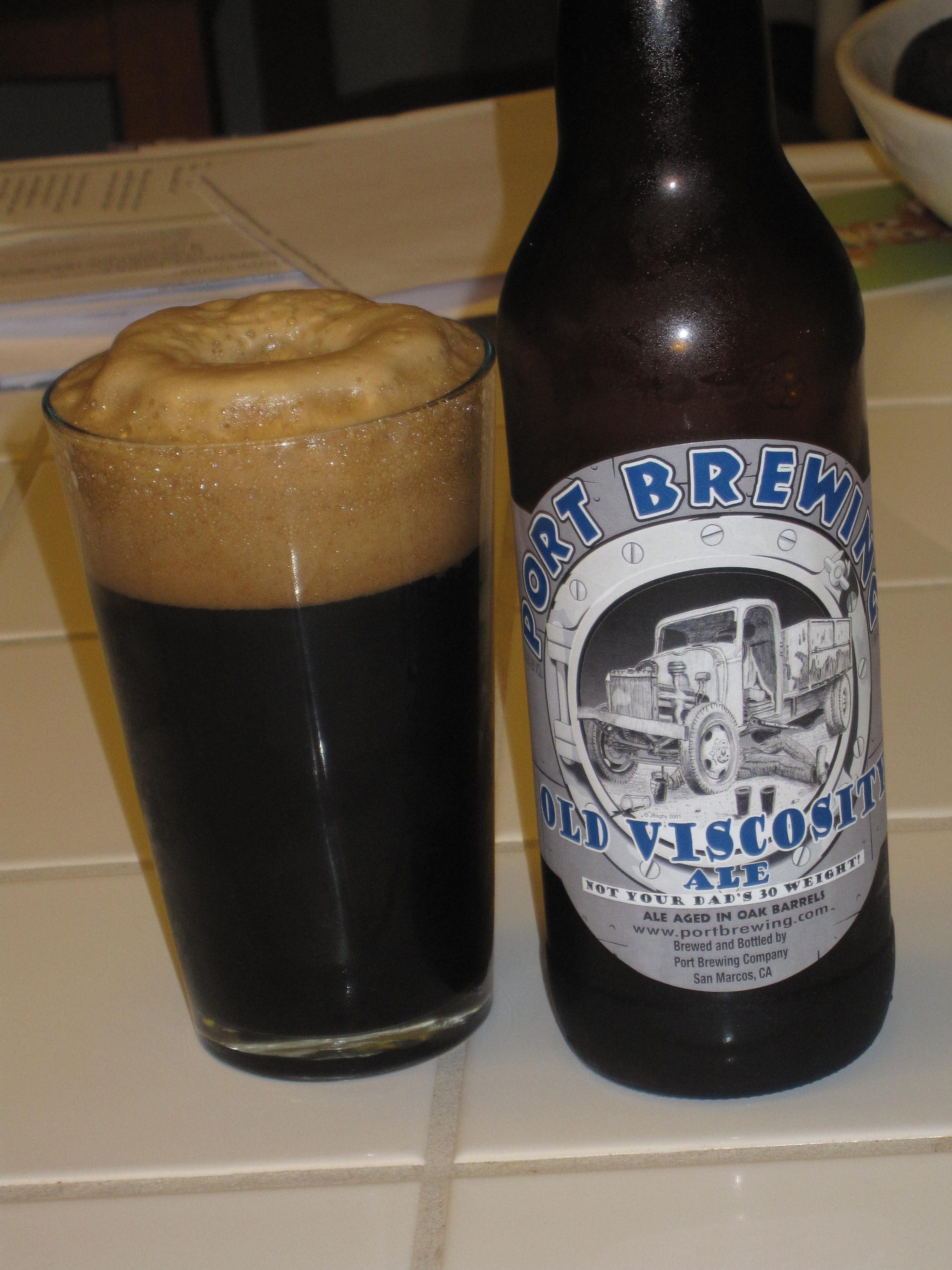 It's after noon, so I think it is safe to talk about beer on a sunday. 'specially since it is my birfday.
It's after noon, so I think it is safe to talk about beer on a sunday. 'specially since it is my birfday.
I bought this bad boy at a Bevmo in Vacaville last weekend, on the way home from Oakland, where the Boy got himself a fancy-dancy trombone as his graduation present. Said trombone got a nice workout on Friday at the local pizzeria when his jazz quintet played a gig, in return for pizza and tips. The crowd consisted mostly of parents of the quint, plus a table-full of their friends, but we had a great time, and the pizzeria did a nice chunk of extra business.
This was my early present to myself, after a tasty dinner of baked beans, roasted chiles, and BBQ'd beef ribs. Mmm, dinosaur bones! Hard to resist when they are only a couple of bucks per pound and pretty meaty. I gave them a nice rub, let them stand for an hour, then smoked (indirect heat) for ~45 minutes over hickory chips and charcoal, finishing with just a couple of minutes on direct heat to crisp up the undersides. Fatty, smokey deliciousness.
And this was dessert. Port Brewing is the extension of the venerable and venerated Pizza Port. If you are ever in the San Diego area, I highly recommend a trip to the mothership in Solano Beach (although they now have locations in Ocean Beach, Carlsbad, and San Clemente as well). Excellent pizza, and a bitchin' beer selection. Each location has its own lineup.
Port Brewing was spun off in 2006, locating in Stone Brewing's former facilities. Named Small Brewery of the Year at the 2007 GABF, and Champion Small Brewery at the 2008 World Beer Cup, these guys know what they are doing.
The Old Viscosity Ale is a strong ale that reads like a Russian Imperial Stout. This is a sipping beer that really should be shared with friends. But it is so good you may be tempted (as I was) to keep it all to yourself. Consider yourself warned.
Continue reading Pint-Sized Reviews: Port Brewing Old Viscosity Ale

 I felt the need for some good, old-fashioned, rock-em, sock-em space adventure stories recently. So I reached for a volume with the appropriate cover art (manly man with bulging muscles and movie-star good looks in futuristic, military-style outfit, set amidst post-apocalyptic ruins): L.E. Modesitt Jr.'s omnibus,
I felt the need for some good, old-fashioned, rock-em, sock-em space adventure stories recently. So I reached for a volume with the appropriate cover art (manly man with bulging muscles and movie-star good looks in futuristic, military-style outfit, set amidst post-apocalyptic ruins): L.E. Modesitt Jr.'s omnibus,  I finished my book o' the month early this month, so I decided to sit down to celebrate and to write up the First Monday post. This seemed like a good time to crack open a bottle of something that I hoped would be special, or at least different.
I finished my book o' the month early this month, so I decided to sit down to celebrate and to write up the First Monday post. This seemed like a good time to crack open a bottle of something that I hoped would be special, or at least different. 

 But the set-back allowed me to see
But the set-back allowed me to see  The New Year is a traditional time to look backward and look forward. Today's selection, Joan Vinge's 1991 Hugo nominee,
The New Year is a traditional time to look backward and look forward. Today's selection, Joan Vinge's 1991 Hugo nominee,